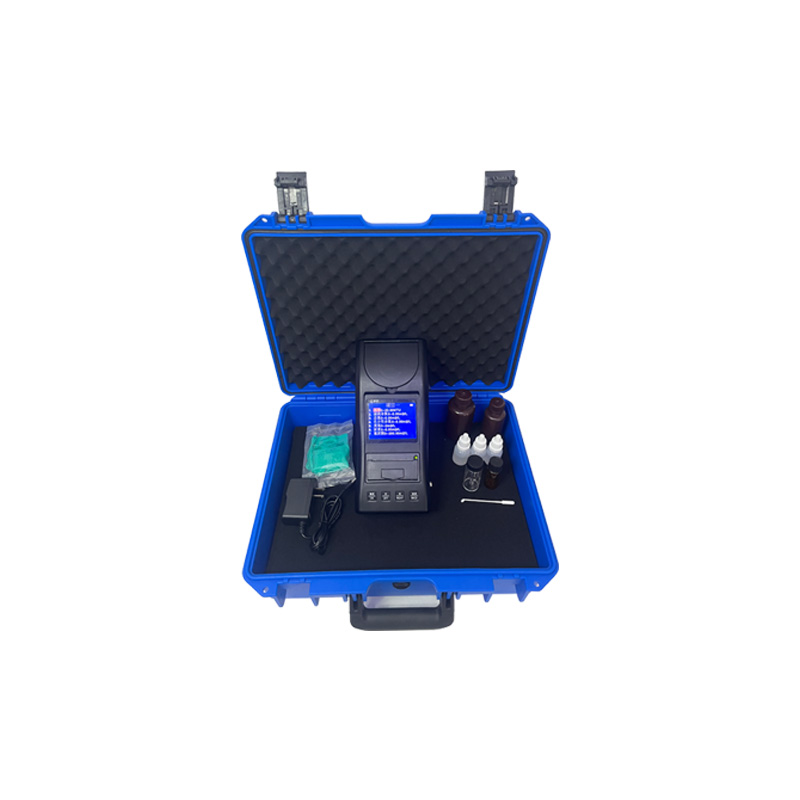The swimming pool water quality test items include: turbidity, ph, pH, urea solution, mineral acid residual chlorine, combined residual chlorine, bacteria number, total coliform group, ozone, temperature, total dissolved solids, oxidation-reduction potential ORP, cyanuric acid, trihalomethane THM.

Ph ph water quality monitoring: water quality monitoring ph ph ph is an index that reflects the ph ph of the water. water quality monitoring acid and alkaline environment is easy to cause irritation to the eyes and face skin of swimmers. The pH standard of swimming pool water required by the state is between 6.5 and 9.5.
Urea solution: water quality monitoring urea solution content is a unique standard in China's swimming pool water quality standards. The urea solution in the water quality monitoring pool mainly comes from human sweat, essential substances and secretion. The excessive content of urea solution in the pool water indicates that the higher the degree of environmental pollution of the pool water.
Water quality monitoring of mine acid residual chlorine: the requirement of water quality monitoring of mine acid residual chlorine is to ensure that the water in the swimming pool has continuous disinfection and sterilization ability, to prevent the re-planting of residual bacteria in the water, and to avoid the adverse impact of infection and sudden increase in the water load on the pool water. Combined residual chlorine: The combined residual chlorine refers to the solubility of chlorine disinfectant in the pool water in the form of chlorine and ammonia. The combined residual chlorine has strong irritation and can cause nasal mucositis and laryngitis. Therefore, it is necessary to limit the solubility of combined residual chlorine. The ideal solubility should be less than half of the acid residual chlorine of the ore or lower.
Quantity of bacteria in water quality monitoring: the quantity of bacteria in water quality monitoring is an index to consider the operation quality of the swimming pool water treatment equipment system, an effective method to understand whether the disinfection and sterilization of the pool water is completely eliminated, and an important index of the filtration and sterilization rate. There is enough processing allowance of disinfectant in the pool water, the pH value is maintained within the required limit, the cycle time of the pool water circulation system is appropriate, and the pool filter equipment is always backwashed to improve the sanitary management of the pool. The number of bacteria can be completely controlled.
Total coliform group in water quality monitoring: if there is a large number of coliform groups in the pool water, it means that the pool water has been polluted by human feces.
Water quality monitoring ozone: water quality monitoring ozone has strong reducibility and is a very strong reducing agent and disinfectant. Ozone is a harmful substance. When there is a certain amount of ozone in the indoor air quality, it is easy for swimmers to breathe into the human body and cause serious toxicity. The allowable value of ozone solubility in the air above the water in the swimming pool required by China is 0.3 mg/m3.
Water quality monitoring temperature: the comfortable temperature should be 23-30 ℃. The temperature of the water in different swimming pools is different. The human body can easily feel uncomfortable if the temperature is too low or too high.
Total dissolved solids: total dissolved solids is an index to check and guide whether the pool water needs to be dissolved or refreshed. The impact of excessive total dissolved solids on the pool water: ① the pool water will become turbid; ② Chlorine is invalid; ③ It will prevent discoloration of pool water; ④ The cycle time of filtration system is shortened; ⑤ The water in the water quality monitoring pool produces odor. Impact of less dissolved total solids on pool water: ① reduce the effect of filtration system; ② Make the water appear slightly grass green. This inspection item belongs to the non-conventional inspection item in China's swimming pool water quality standard.
Oxidation-reduction potential (ORP): This item is an index indicating the ability of disinfectant to kill germs, and is an index of the drinking water standard of the League of Nations. ORP is used to measure the medium and weak air oxidation ability of disinfectant, not the content of disinfectant. According to practical experience, as long as the ph and alkalinity of the pool water quality monitoring are within the standard range and the ORP value is>600mV, the bacterial amount in the pool water quality monitoring should be within the operating range.
Cyanuric acid: Cyanuric acid is the general name of sodium dichloroisocyanurate and sodium trichloroisocyanurate. It is a kind of organic disinfectant. It will accumulate continuously in the pool water, and less will be converted by sunlight. Too much will easily affect the disinfection and sterilization effect. Therefore, when using these two disinfectants, cyanuric acid must be detected and controlled.
Trihalomethane (THM): Trihalomethane is a by-product of chlorine disinfection and sterilization. It has the uncertainty of pathogenic, teratogenic and carcinogenic substances. Therefore, the content of trihalomethane in water quality monitoring and control pool cannot be underestimated.



